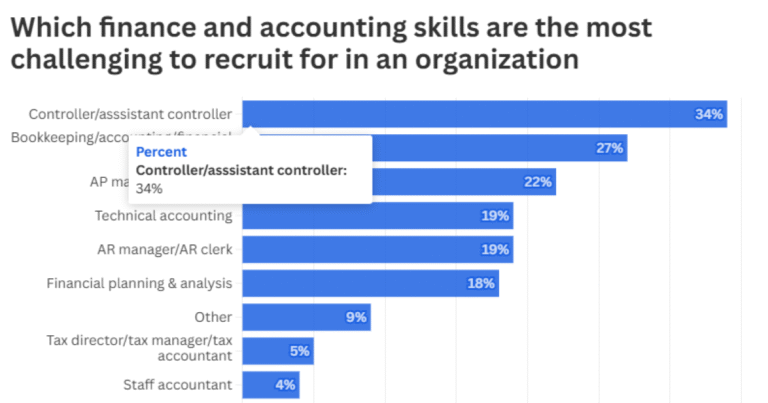CFOs and corporate controllers aren’t as concerned about accountant shortages and are dialing back their hiring plans, according to a new survey.
The survey, released this month by the Controllers Council, polled over 300 controllers, CFOs and related executives from May through July, and found that despite all the hype about accountant shortages, 53% had no shortages, 33% had minor shortages, and only 10% had significant shortages of finance and accounting talent.
Controllers and assistant controllers continue to be cited as the most challenging roles to recruit, by 34% of survey respondents. Bookkeeper/financial reporting ranked as the second most challenging role at 27%, followed by jobs including accounts payable (22%), technical accountant (19%), accounts receivable (19%), and FP&A (18%).
Nearly 71% of respondents intend to maintain their current finance and accounting staffing levels, up from 64% last year. Those planning to expand their F&A teams declined to 24% this year from 32% last year, suggesting more caution in growth planning. The share of organizations expecting reductions in F&A staff grew to 5%, up from 4% in 2024 and 2% in 2023.
“F&A hiring trends indicate a measured approach as economic and regulatory uncertainty persists,” said the report. “Employers may be planning to optimize current teams rather than pursue aggressive expansion. Decreasing hiring trends may reflect rising cost pressures, and possibly automation replacing some manual and repetitive duties and corresponding staff.”
While hybrid work arrangements remain the most commonly cited (53%) by the respondents, the proportion has dropped since last year. One-third of organizations have moved to fully onsite operations (33%), a modest increase from last year, while remote-only environments remain limited, holding steady at 10%.
Organizations are reporting moderate compensation increases this year compared to the past two years. Executive staff led the way on pay increases for the third consecutive year, with a 3.9% weighted average, followed by managers (3.6%), directors (3.4%) and administrative/clerical staff (3.2%).


